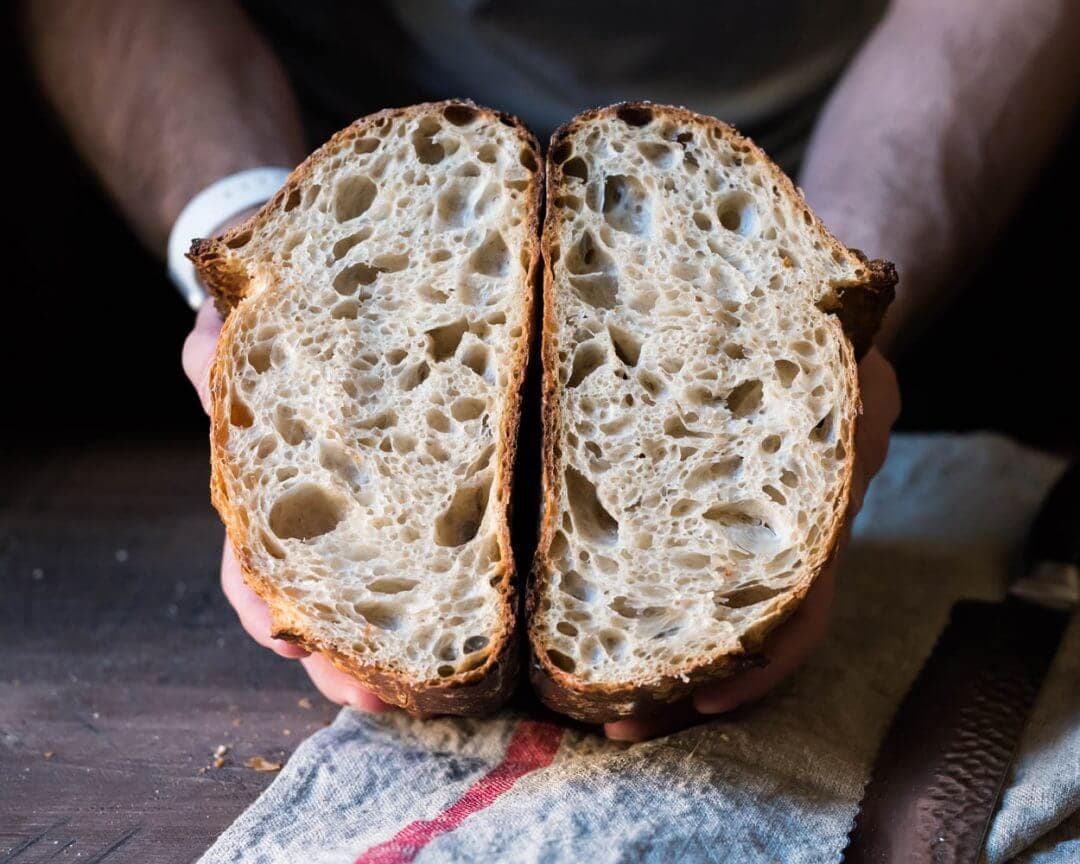Hi everyone! I’m looking for any advice y’all might have on incorporating yogurt into your dough, particularly when making flatbread. Most recipes I’ve found online so far are by volume :( so I can’t really get a sense of what % to try for. I’m at the point where I usually just pick a target hydration % and go from there, but I’m not quite sure how to account for incorporating yogurt in that approach. Any words of wisdom? Thanks!


That’s a really good question, because baker’s percentages are so confusing when you’re expecting them to add to 100%.
In a recipe using baker’s percentages, the value of 100% is equal to the total weight of the flour. Then everything else is calculated as a % of that total weight. Say I want to make a loaf with 250g of flour. If I’m incorporating rye in my recipe like the recipe you mentioned, then the weight of the rye and AP together will add to 250g. If I’m just using AP, then I would just simply measure out 250g. Make sense? And all other ingredients are going to be a % of 250g in this example.
Now it seems complicated, but this actually makes everything really easy once you figure out the proportions you’d like to use, and it gives you a lot of freedom to explore but still make something you know will be edible (LOL). I love making higher hydration loaves, so say I want to use 72% hydration, and I’m feeling crazy so I want 10% of that to be milk to lend a little softness and sweetness to the rye. So my total hydration is 72% of 250g, or 180g total. Since I want 10% of my liquids to be milk, I’ll weigh out 18g milk and 162g water. (EDIT- reading this over, I realize this is a bad example because most recipes won’t say “10% of your hydration is milk” or anything like that. I don’t really follow recipes anymore so this is how I usually make stuff and I wanted to show how you account for hydration as a whole, but what you’ll see in actual, properly written recipes will always give you the % in terms of the flour weight. My bad, I’m sorry about that!!)
Also, regarding hydration, if you’re using dry active yeast, remember to account for the water you’re using to bloom in your calculations! And if you’re using a starter, the general rule is to attribute half the weight to flour and half the weight to hydration. I like using a pâte fermentée at about 20%, so in our example, I’d be using 50g of it, and I’d account for 25g each flour and liquid in my calculations. I’d end up actually weighing out only 225g flour, and my water would end up weighing out to 137g.
I know this all seems complicated looking over it, but I promise using baker’s percentages makes it all so much easier, and you can effortlessly scale up or down too.
I like you. Good explanation. To add to that; like you said Flour is “100%” or 100/100. So when a recipe calls for 2% salt, it’s looking for 2/100 salt. Since we know the weight of the flour is 100%, then we can multiply the weight of the flour by 2/100 or .002.
This is only really relevant for up / down scaling recipes. If I need to make a bunch of loaves and decide I’m just going to use the remainder of my bag of flour suddenly my recipe is:
flour: 100% = 3628g Water: 72% ??? Salt:3% ???It’s much easier to change the recipe by multiplying 3628g by .72 and getting 2613g than trying to mess around with 1/4 cups and teaspoons.
I hope this helps anyone!